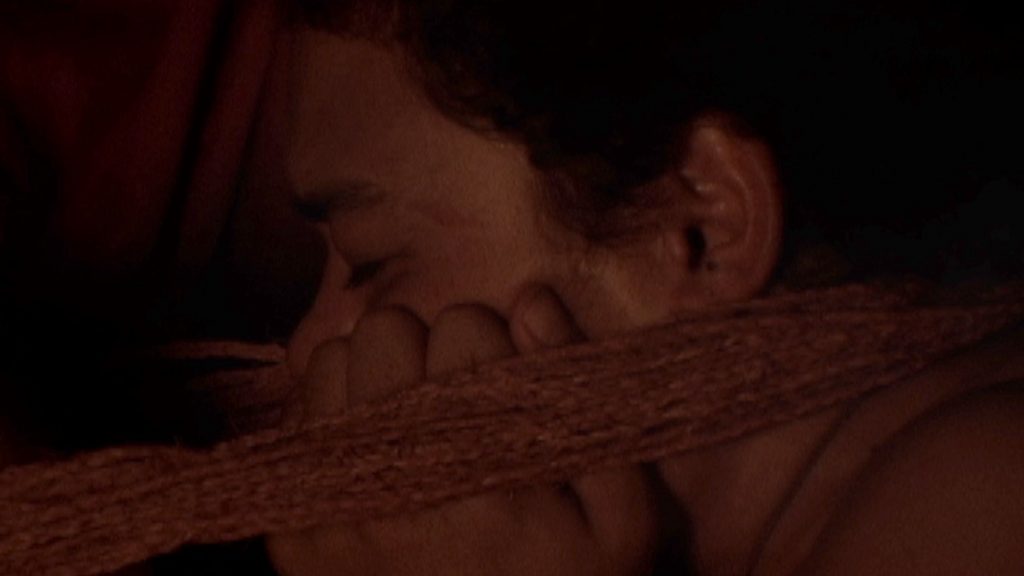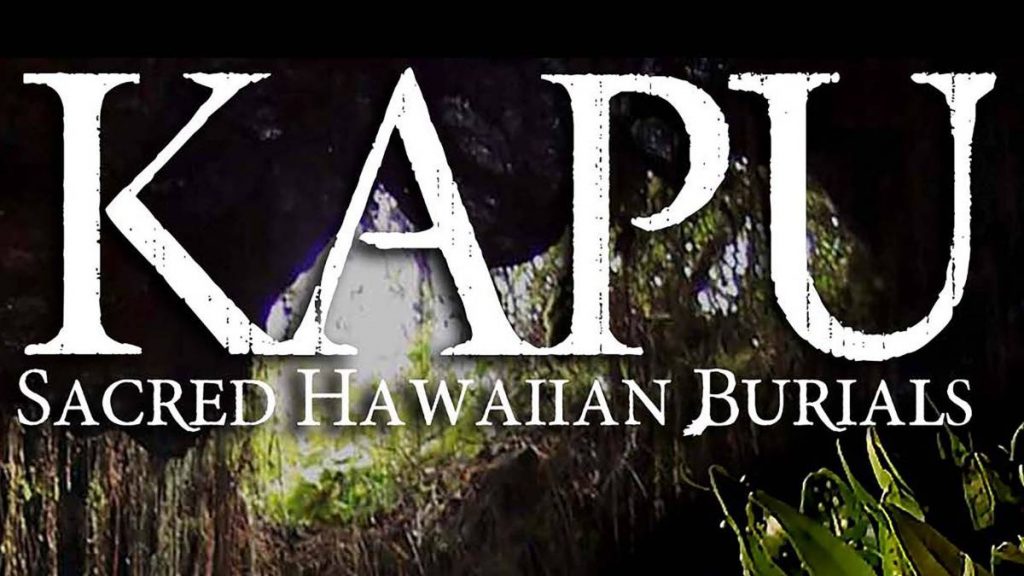A spooky discovery in a Big Island cave leads to a documentary 23 years in the making
Thirty-four-years ago, three older brothers of 8-year-old Keoni Kealoha Alvarez were playing in the forest on a property next to where their family was building a home in Puna on the Big Island.
They were just boys being boys when they stumbled upon a hidden ancient cave. Of course, they decided to see what was inside.
While he wasn’t with his brothers at the time, what they discovered — skeletal human remains — changed Alvarez’s life forever. It led him on a journey to protect the sacred ‘āina, the land, and his Native Hawaiian culture while educating the world about them.
Alvarez, now 42, spent 23 years creating a documentary that he co-produced, directed and edited about his journey. It’s called “KAPU: Sacred Hawaiian Burials.”
A special free screening of the 2-hour documentary will be hosted Nov. 4 at the University of Hawai‘i’s Hilo Performing Arts Center. Doors open at 6:30 p.m., with the film beginning at 7 p.m.
There will be a question-and-answer session with Alvarez and Palikapu Dedman, a Hawaiian cultural practitioner with the Pele Defense Fund who also is featured in the film.
“KAPU: Sacred Hawaiian Burials” debuted last year at the Maui Film Festival and was featured during the Hawai‘i International Film Festival, including a Big Island premier at the historic Palace Theater in downtown Hilo.
After finding the human remains, the spooked out brothers left the cave and headed immediately home, where they told their mother, Aileen Alvarez (a co-producer of the documentary), when she got home from work. She called the police.

Officers came out to investigate. The find was referred to a Hawai‘i state archaeologist, who went into the cave and determined the skeletons were Native Hawaiian remains.
“At the time, my mom was thinking that because the state came out, the police came out, that there are laws that protect these kinds of places,” Keoni Alvarez said. “So she just relied on that. That someone from the government came out and it’s marked and nobody’s going to be able to develop or anything like that on the site.”
He grew up taking care of the burial cave — eventually found to contain the remains of kūpuna, or ancestors, of his family, which spans seven generations back to the Hawaiian Kingdom period. He also looked after the iwi, the sacred bones of kānaka maoli from generations past.
When he was about 18 years old, the Pāhoa High School graduate began to notice a change in Puna. It was the early 2000s, and a development boom was just getting underway in the district.
So he decided to make sure the proper documentation for the burial cave was still on file. Instead, he found the reporting of the site was lost because of poor government recordkeeping.
Some developers at the time were running roughshod over Hawaiian ancestral remains. Alvarez feared that every time another lot was cleared, another burial site would be desecrated and lost.
Knowing the sacred burial cave containing the remains of his own ancestors was undocumented, he had to act to keep it safe. When learning a home developer wanted to put two homes on the cave property, Alvarez went into high gear.
The young filmmaker decided to take a camera along to document the process and the end result is “KAPU: Sacred Hawaiian Burials.”
His passion project also led him down a road of self-discovery on the Big Island and throughout the state that brought him knowledge of Native Hawaiian burial traditions and his own indigenous heritage.
“In the Hawaiian culture, burials are kapu, which means forbidden and sacred,” Alvarez says in the documentary’s trailer.

The film chronicles its maker’s fight to save the burial cave while at the same time learning about his family’s history and the battle Native Hawaiians on all the islands have waged for more than 100 years to keep iwi and burial sites safe from harm.
Alvarez, who’s family moved from O‘ahu to the Big Island when he was 8, talks to a variety of cultural practitioners and a host of others, including attorneys, historians, an anthropologist, a Hawaiian studies professor and a member of the Royal Order of Kamehameha, among many others. Former Hawai‘i Gov. John Waihe‘e is also in the film.
Does Alvarez save the cave?
You’ll have to attend Saturday’s screening event to find out for sure, but since his film premiered last year, he had six properties donated to him that he owns and cares for, all of which are now historical preservation sites. He is using those sites to help teach the next generation about sacred burial traditions and Hawaiian culture.
The film also led to Alvarez creating a collection of online resources, including information from the film, where anyone can learn about traditional Hawaiian burial practices and how they, too, can help protect and save burial sites.
The voices in the film are not only from him and the cast of professionals and experts, but his ancestors as well. It’s about respecting the culture, not necessarily believing in its traditions. Death and burying loved ones is something that crosses cultural lines and involves everyone.

Alvarez hopes his film and the work he’s doing now with his nonprofit, also called KAPU: Sacred Hawaiian Burials, will help people realize that desecrating and disrespecting Native Hawaiian burial sites and those of other cultures around the world is akin to it happening to the gravesites of their own kūpuna, family and friends who have died.
“I just really hope everybody really thinks about what they’re doing when they approach burials,” he said. “If you can treat burials with respect, then you have the understanding of what aloha is. When you desecrate [burial sites] and if you wipe it away, you wipe out our whole culture.”























